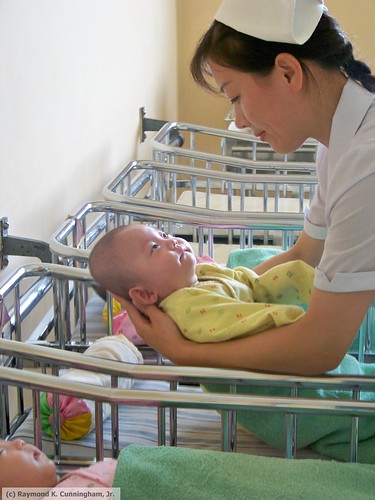was recently at a critical care nursing meeting with senior colleagues in Australia, when the question was raised about our nursing association's use of the term 'critical care' to describe it. The reason that this question came up was because, on reflection, we realised that nearly all of our members were intensive care nurses. The question that then arose was, shouldn't we be using the term 'intensive care'?
Why does this matter? Critical care is an umbrella term which is used to describe a whole range of critical specialties, such as emergency care, and coronary care. In Australia, it even includes the Royal Flying Doctor Service. However, in many countries, including North America, which has the largest body of critical care nurses--AACN--the term 'critical' is favoured. And, in Europe, some specialties are linked together, for example intensive care and anaesthetics.
Where this causes problems for large 'critical' care nursing associations is with regard to its core business, which is usually to do with education and professional issues. In trying to represent all specialties, it is very difficult to i) meet everybody's needs and ii) provide a professional stance on issues that are relevant to all specialties. For example, if a critical care association was to provide a position statement on feeding the critically ill patient, would it have the same relevance to emergency department nurses as it would have to intensive care nurses or anaesthetic nurses?
It is interesting to note that our physician colleagues rarely use the term 'critical care' to describe their organisations. They are usually much more specific, using terms such as 'intensive care' or 'cardiac care'. For example, the Intensive Care Society (UK), the Cardiac Society of Australia and New Zealand, or the World Federation of Societies of Intensive Care Medicine. In many ways this is an advantage, because they are easily identified as a group, and this means their members understand who they are and the public understands who they represent. Therefore, when presenting a position to an official body, such as a government, they have clear representation.
One of the most important aspects of a professional association's core business is the provision of education events and, in particular, conferences. The broader an association is in terms of its membership, the more difficult it is to provide educational events that meet the needs of all its members. This is also the case, if the association provides a journal for its members. Thus, the irony is that the more inclusive an organisation becomes, the more likely it is to marginalise a proportion of its members. This doesn't sit very well with me, since one of the most important principles I use to guide my own dealings as a leader and member of various organisations, is equity.
In summary, whilst it might seem like a good idea to establish large critical care organisations because there is a definite advantage to be had from strength in numbers, the downside is that the goals and identity of the organisation may become diluted. If this happens, then the majority of its members may become disillusioned with the organisation, and this in turn may ultimately lose members.
Connect: The World of Critical Care Nursing is the official journal of the World Federation of Critical Care Nurses and is published in association with the European federation of Critical Care Nursing associations.
Paul Fulbrook, Professor of Nursing, National Centre for Clinical Outcomes Research, Australian Catholic University, and Nursing Director Research & Practice Development, The Prince Charles Hospital, Brisbane, Australia
Source Citation
Fulbrook, Paul. "Critical care or intensive care?" Connect: The World of Critical Care Nursing 7.2 (2010): 107. Academic OneFile. Web. 18 June 2010.
Document URL
http://find.galegroup.com/gps/infomark.do?&contentSet=IAC-Documents&type=retrieve&tabID=T003&prodId=IPS&docId=A228121570&source=gale&srcprod=AONE&userGroupName=broward29&version=1.0
Gale Document Number:A228121570
Disclaimer:This information is not a tool for self-diagnosis or a substitute for professional care.

 (Album / Profile) http://www.facebook.com/album.php?aid=10034&id=1661531726&l=0b77e26203
(Album / Profile) http://www.facebook.com/album.php?aid=10034&id=1661531726&l=0b77e26203


No comments:
Post a Comment